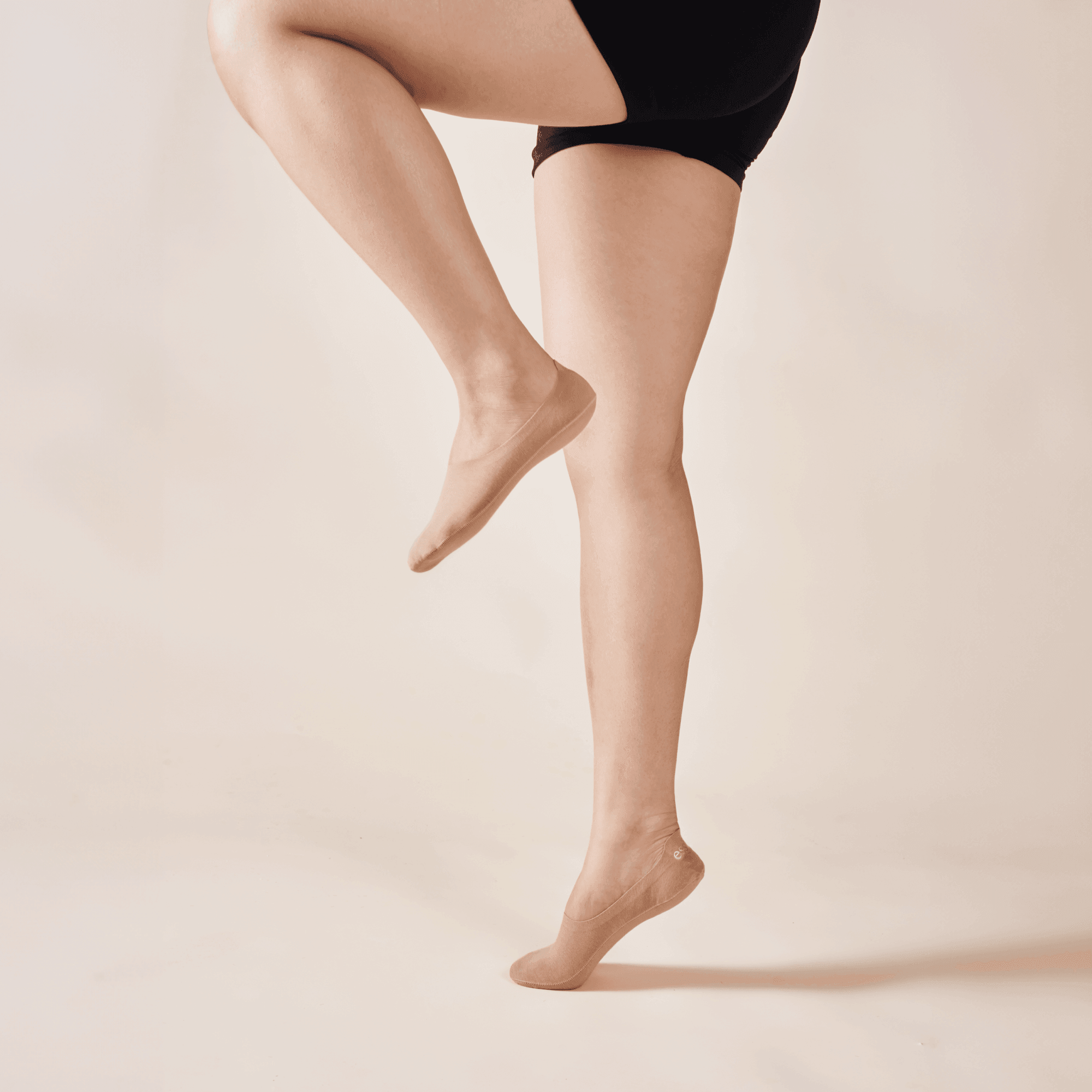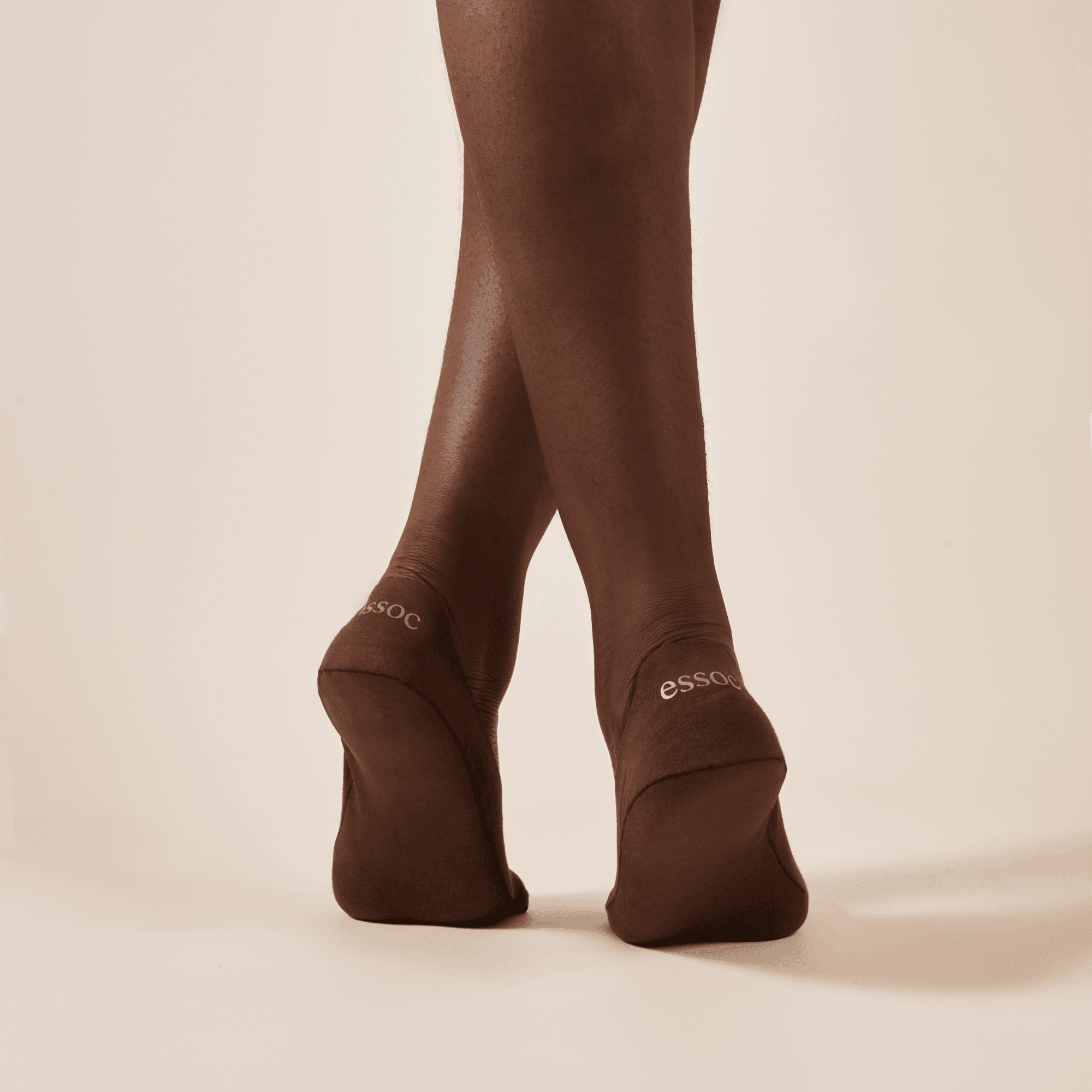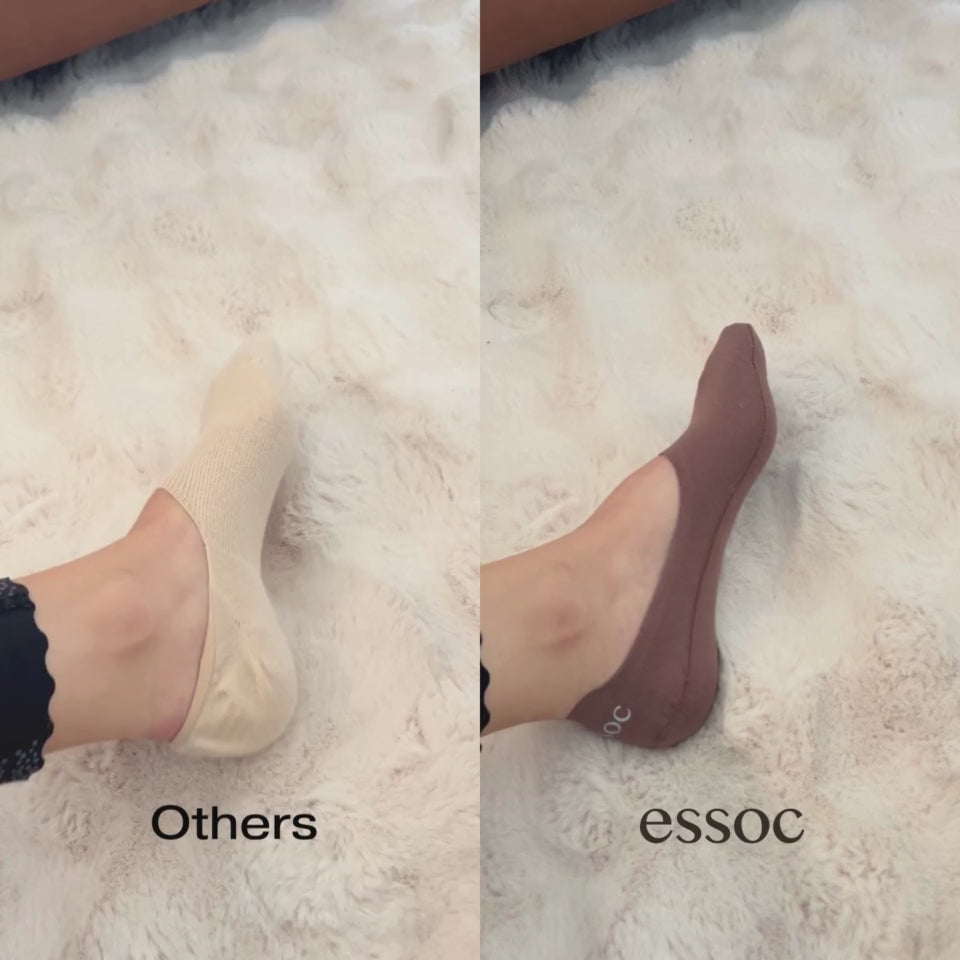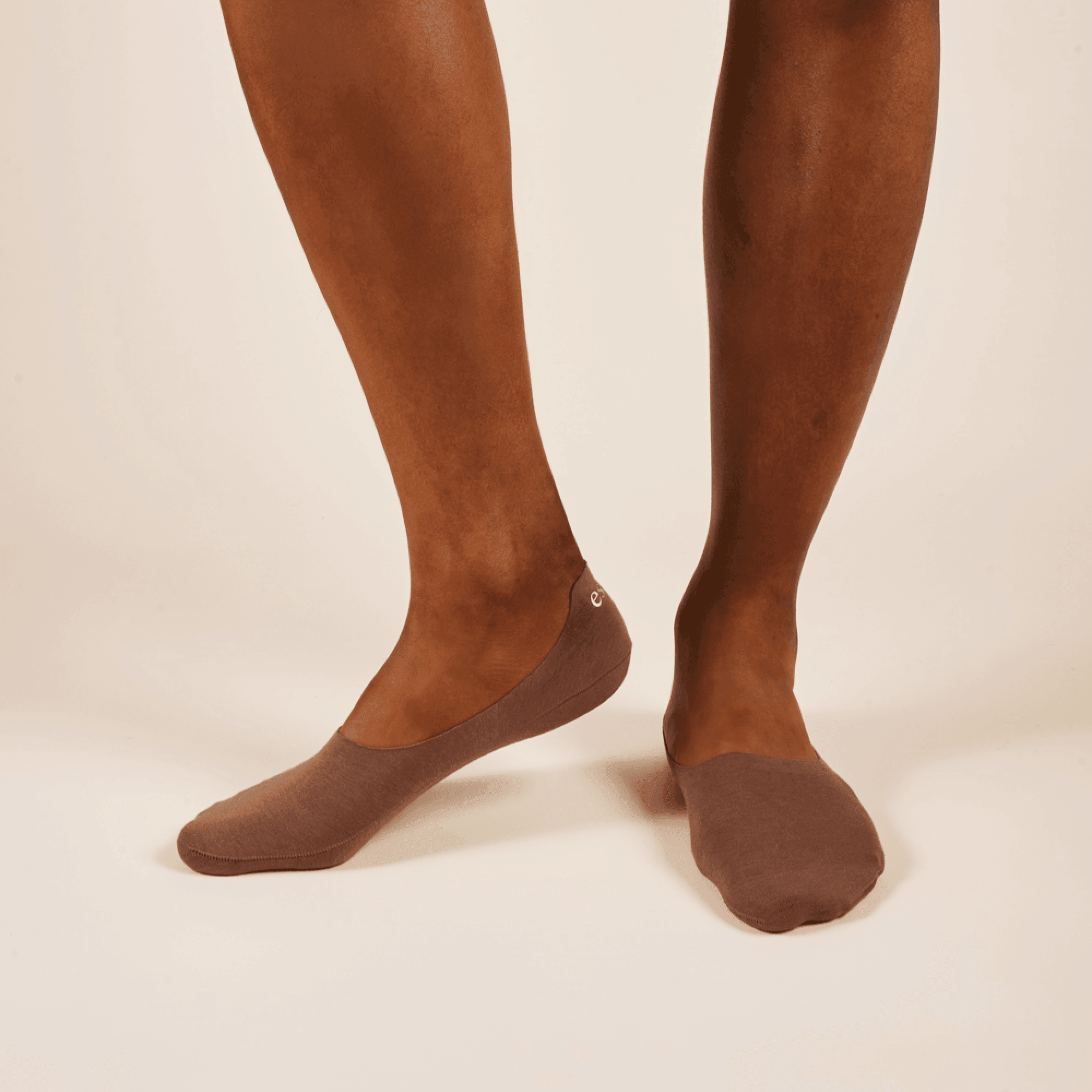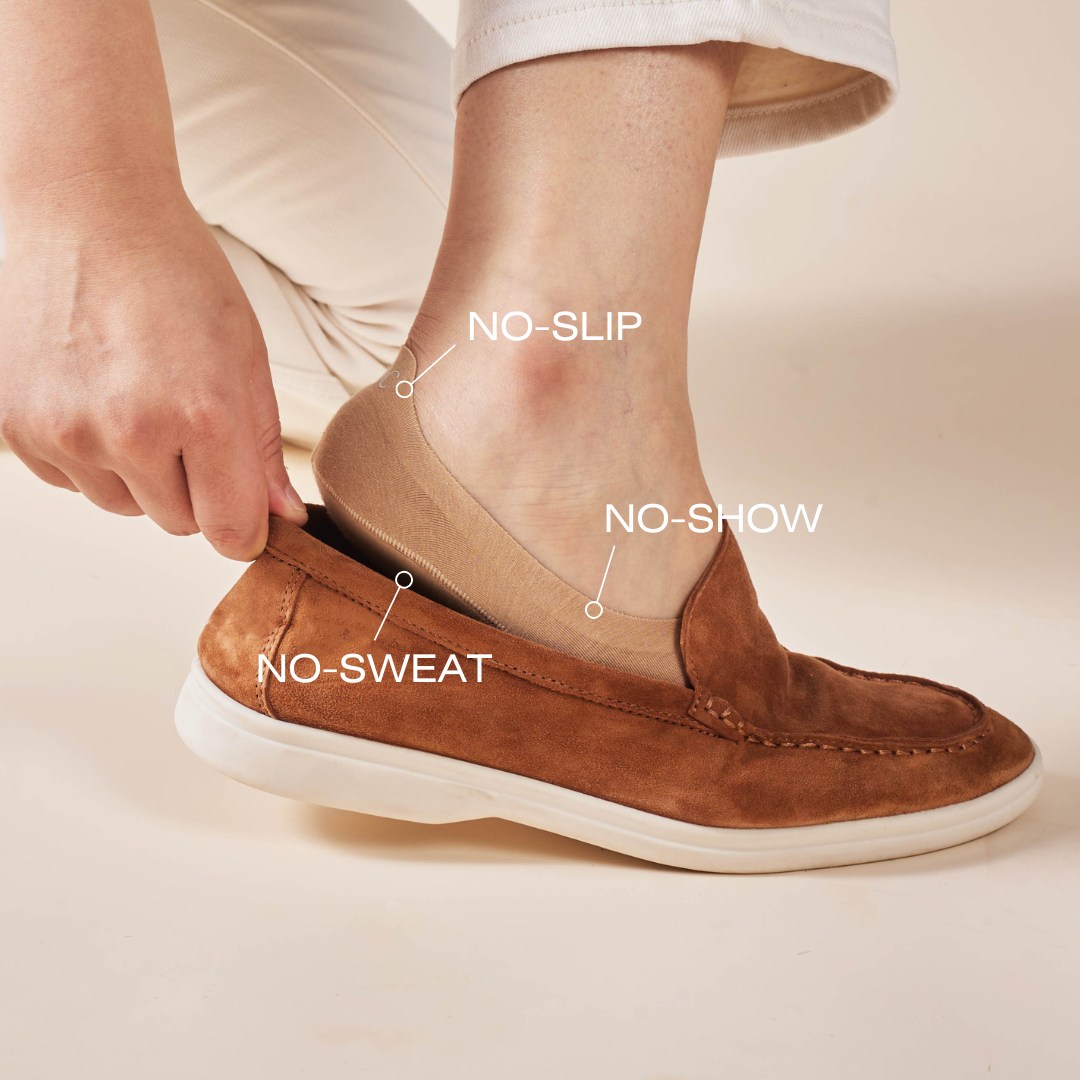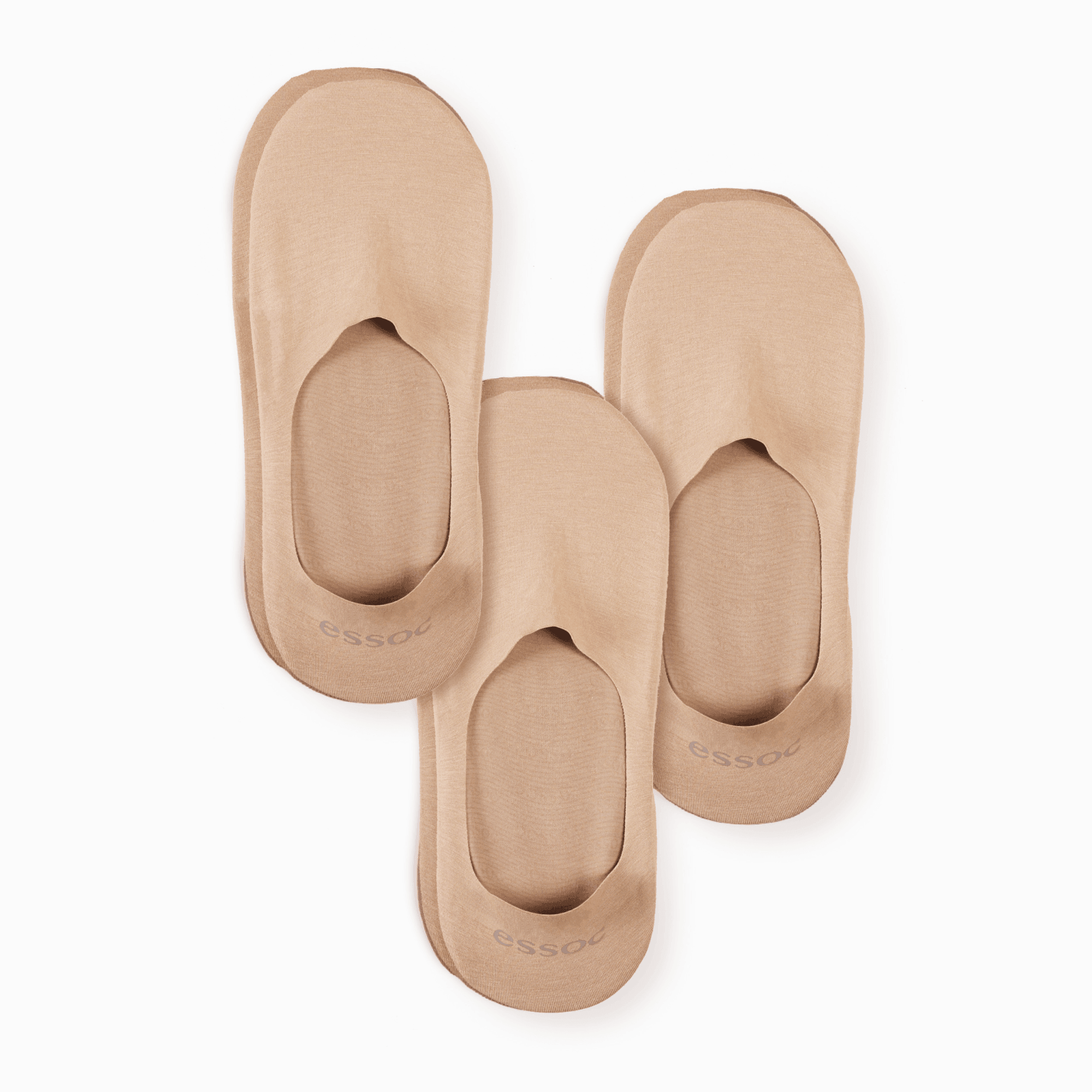Low-cut socks are a fantastic invention, designed to provide comfort while remaining nearly invisible in shoes. They allow wearers to enjoy their favorite loafers without worrying about socks peeking out and disrupting their style. Perfect for all-day wear, they offer the ideal balance of breathability and support, whether for work, errands, or casual outings. Keep reading to discover the best options and how to find the perfect pair.
Key Takeaway
- Low-cut socks are designed for comfort and invisibility.
- They come in various materials to suit different activities and weather.
- No-show socks help to maintain a sleek look without sacrificing comfort.
What Are Low-Cut Socks?
Low-cut socks are those little wonders that sit just below your ankle bone. They’re made to be hidden when you're wearing shoes, especially low-cut ones like loafers and sneakers. You know that feeling when you put on your favorite shoes, and you can’t stand the thought of those socks peeking out? Low-cut socks are the answer!
They’re made from different materials, including cotton, polyester, and spandex, which means they can be comfy, stretchy, and even breathable. This is super important, especially if you’re on your feet all day long. The last thing you want is sweaty feet, right?
Benefits of Wearing Low-Cut Socks
Wearing low-cut socks has a bunch of benefits. Here are some of them:
Comfort
Feet take a beating. Walking, running, standing too long—they get sore fast. Good socks help, but thick ones trap heat, and thin ones wear out too soon. Low-cut socks hit a sweet spot: breathable, cushioned, and snug. That’s why Essoc’s no-show socks are crafted with ultra-soft modal and cotton blends, ensuring all-day comfort without slipping or bunching.
Materials matter. Cotton blends (often mixed with polyester or spandex) wick moisture, keeping feet dry. Merino wool? Even better. It regulates temperature and resists odor. Plus, manufacturers weave in extras: arch compression, reinforced heels, seamless toes. Small details, big difference.
No-Show Design
Style matters, even with socks. High socks stick out, crew socks peek over shoes, but low-cut socks? They stay hidden. Sneakers, loafers, slip-ons—whatever the footwear, the socks disappear. It’s all about keeping the focus on the shoes, not what’s underneath.
Fit is key. Too low, and they slip under the heel. Too high, and they ruin the look. The best pairs have elastic bands around the ankle, so they don’t slide down. Essoc takes it a step further with hypoallergenic silicone grip strips, ensuring a secure fit that stays in place—no more slipping or adjusting throughout the day. Some brands take it further with deep heel pockets. More contouring, better grip.
No-show socks work best with casual and athletic styles. Leather dress shoes? Not so much. But for everyday wear, they’re the go-to. A clean, sockless look without the discomfort. Win-win.
Non-Slip Features
Slipping socks? Annoying. Step in the wrong way, and they bunch up underfoot. Fixing them mid-stride? Even worse. Low-cut socks tackle this with silicone grips, hugging the heel so they stay put.
Grip placement varies. Some brands use a single strip, others go for multiple dots. Either way, it’s all about friction. More traction means less movement, which means no more digging socks out of shoes.
Best for active wearers. Runners, gym-goers, even casual walkers benefit. Shoes fit better when socks don’t shift. No wrinkles, no bunching, no distractions. Just comfort, step after step.
Materials Matter
When it comes to low-cut socks, the materials can make a big difference in how they feel on your feet. Here are some common materials used:
Cotton
Cotton's breathability makes it stand out. It allows air to flow through the fabric, keeping feet cool. On hot days, that's a game-changer. Moisture absorption? Cotton does that, too. It pulls sweat away from the skin, though it doesn't dry quickly. Once damp, cotton stays that way for a while. That can be a problem in humid conditions.
Why choose cotton?
- Comfortable for everyday wear
- Good airflow, keeping feet from overheating
- Easy to wash and maintain
- Affordable, widely available
For workouts or wet environments, cotton might not be the best. But for daily use? It's a solid choice.
Bamboo
Bamboo socks are gaining attention. They feel like cotton but offer more. They’re softer, smoother, and—most importantly—better at handling moisture. Feet stay drier. Odors stay away. That’s a win.
Bamboo fibers have micro-gaps. That’s what makes them so absorbent. They wick moisture away from the skin faster than cotton, reducing the chance of blisters. The material also has natural antibacterial properties. That means less stink after a long day.
What makes bamboo stand out?
- Ultra-soft, almost silky texture
- Absorbs and wicks moisture quickly
- Naturally resists bacteria (less odor)
- More eco-friendly than cotton
For people with sensitive skin, bamboo can be a great alternative. Just watch out for blends with too much polyester—those won’t offer the same benefits.
Wool
Cold feet? Wool fixes that. It traps heat, keeping toes warm even in freezing weather. But it’s not just for winter. Wool’s temperature-regulating properties work year-round. It insulates in the cold and breathes in the heat.
Merino wool, in particular, is a favorite. It's finer and softer than regular wool. No itchiness. No bulk. It absorbs up to 30% of its weight in moisture without feeling damp. That’s why hikers and runners swear by it. Even when wet, wool keeps feet warm.
Why wool?
- Excellent insulation (warmth without bulk)
- Moisture-wicking (feet stay dry longer)
- Naturally odor-resistant
- Soft options like merino don’t itch
The downside? Wool socks cost more. But for comfort and performance, they’re worth it.
Nylon and Spandex
Stretch matters. Socks that sag or bunch up? Nobody wants that. That’s where nylon and spandex come in. These synthetic fibers add elasticity, helping socks fit snugly. A little bit goes a long way—just a few percent of spandex can make a difference.
Why are these materials added?
- Improve fit (no slipping, no bunching)
- Enhance durability (longer-lasting socks)
- Help maintain shape after washing
- Provide light compression for better support
Pure cotton or wool socks feel nice, but without stretch, they won’t stay up. That’s why most modern socks include at least a little nylon or spandex. It’s a small addition, but it makes a big difference.
Choosing the Right Low-Cut Socks
Now that you know what low-cut socks are and why they’re beneficial, how do you choose the right ones for you? Here are some tips:
Consider Your Activities
Socks aren’t just fabric. They’re gear. The right pair makes a difference, whether you're running a mile or walking to the fridge. And low-cut socks? They might seem like a simple choice, but picking the wrong ones can mean blisters, sweaty feet, or socks that disappear into your shoes. Annoying.
Think about what you’ll be doing. Running? Look for moisture-wicking fabric (like polyester blends). Hiking? Some extra cushioning helps. Just lounging? Soft cotton works fine.
Here’s what to check:
- Moisture-wicking – Keeps feet dry. Essential for workouts.
- Breathability – Mesh panels or light fabric help with airflow.
- Grip support – Some have silicone strips on the heel to prevent slipping.
A good sock matches the activity. That’s the rule. You wouldn’t wear dress shoes to the gym. Same logic applies here.
Check the Fit
Fit isn’t just about size. It’s about feel. Too tight? They dig in. Too loose? They bunch up. Either way, bad news. The best fit is snug but not constricting.
Low-cut socks tend to slip, especially with low-profile shoes. Some brands add elastic bands around the arch or ribbed cuffs at the opening to keep them in place. Look for those.
What to check for:
- Heel grip – Stops them from slipping inside your shoes.
- Arch compression – Adds support, especially for active wear.
- Seamless toes – Prevents irritation during long wear.
Trying them on matters. If they slide down when you walk around the house, they’re not going to stay put on a run. Essoc’s no-show socks are designed with an inclusive fit for all sizes, ensuring a perfect snug feel that moves with you, not against you.
Material Preference
Fabric matters. It affects comfort, durability, and sweat control. Some socks feel great at first but turn soggy fast. Others last forever but feel scratchy. Balance is key.
Material breakdown:
- Cotton – Soft, breathable, but holds moisture. Best for casual wear.
- Polyester/Nylon – Moisture-wicking and durable. Ideal for workouts.
- Merino wool – Regulates temperature, doesn’t hold odor. Perfect for all seasons.
If you sweat a lot, avoid 100% cotton. If it's winter, thin synthetic socks might not cut it. The right fabric makes a big difference.
Low-Cut Socks for Different Seasons
Credits: Living In Canda
Low-cut socks can be worn year-round, but you might want to choose different types depending on the season.
Spring and Summer
During warmer months, it’s essential to keep your feet cool and dry. Low-cut socks made from breathable materials like cotton, bamboo, or moisture-wicking synthetics help regulate temperature and prevent excessive sweating. Bamboo socks, in particular, are naturally antibacterial and soft, making them a great choice for all-day wear. Thin, lightweight options ensure proper air circulation and reduce the risk of blisters caused by excessive heat and friction.
Fall and Winter
As temperatures drop, thicker and more insulating materials become essential to keep your feet warm. Wool-blend low-cut socks provide excellent heat retention while still being breathable, making them perfect for chilly walks or outdoor activities. Cushioned cotton socks also offer extra warmth and comfort, especially when paired with boots or insulated sneakers. Some thermal socks even have moisture-wicking properties to prevent dampness and cold feet during winter outings.
Best Uses for Low-Cut Socks
One of the biggest advantages of low-cut socks is their versatility. Whether you’re dressing casually, preparing for work, or engaging in physical activities, they can complement different lifestyles.
Casual Wear
Low-cut socks are an excellent choice for everyday outfits. They pair effortlessly with jeans, sneakers, loafers, or even slip-on shoes, giving you a stylish yet relaxed look. Since they stay hidden beneath shoes, they create a seamless appearance while keeping your feet comfortable.
Work
Many modern workplaces allow casual or business-casual attire, and low-cut socks work well in these settings. When wearing dress shoes, loafers, or ankle boots, choosing high-quality low-cut socks with reinforced heels and toes ensures durability and comfort throughout long workdays. Opting for neutral colors like black, gray, or navy can maintain a polished and professional look.
Active Lifestyles
If you’re into fitness, running, yoga, or hiking, investing in moisture-wicking, cushioned low-cut socks is a smart move. These socks help absorb sweat, reduce friction, and provide the necessary support for high-impact activities. Some athletic low-cut socks also feature arch compression and padded soles to prevent discomfort and improve performance.
Travel
Low-cut socks for sneakers are a must-have for travelers. They take up minimal space in your luggage, making them convenient for packing. Whether you're sightseeing, walking through airports, or embarking on an adventure, these socks offer comfort without the bulk of higher-cut options. Plus, they work well with various shoe styles, from sneakers to casual slip-ons, making them ideal for any travel destination.
Fun Designs and Styles
Low-cut socks can be more than just practical. They can also be fun! You can find them in all sorts of colors and patterns. Here are some popular styles:
Solid Colors
Sometimes, all a person needs is simplicity. A pair of solid-colored low-cut socks—black, white, gray—fits any occasion. They blend in, not demanding attention but doing their job well. Some might call them boring. Others, essential.
Why? Because they go with everything. Sneakers, loafers, slip-ons—doesn’t matter. And when it comes to materials, options vary. Cotton for breathability. Bamboo for softness. Synthetics for durability. Certain brands design them with reinforced heels (for longevity) and seamless toes (for comfort). A small difference, but noticeable. Those details matter, especially for daily wear.
Patterns
Patterns do something solid colors don’t: they stand out. Stripes, polka dots, checkerboards—each adds a bit of personality to an outfit. And the best part? They’re subtle. Low-cut socks peek out just enough, offering a quick flash of color.
Stripes are classic. Horizontal lines make feet look wider. Vertical ones? Slimmer. It’s a small illusion, but it’s there. Then there’s polka dots—playful, nostalgic, fun. Some brands mix in contrast cuffs or heel patches, adding another layer of detail.
Material choice affects how patterns appear. Cotton holds color well but fades faster. Polyester blends keep designs crisp longer.
Fun Designs
Not all socks have to be serious. Some are just for fun. Tiny avocados, space cats, sushi rolls—if there’s an interest, there’s a sock design for it. They make people smile. Sometimes, that’s the whole point.
Novelty socks aren’t just for kids. Plenty of adults wear them, often as a hidden quirk under office attire. A suit might say professional. Socks? They might say, “I like dinosaurs.” Brands experiment with texture too. Some use raised embroidery for a 3D effect. Others mix fabrics for a unique feel—knit patterns, soft terrycloth details, even glow-in-the-dark elements.
FAQ
What are the best materials for comfortable low-cut socks for daily wear?
Cotton low-cut socks for all-day comfort provide breathability and softness against your skin. Bamboo low-cut socks for extended wear offer natural moisture-wicking properties and antimicrobial benefits. For cooler months, wool low-cut socks for long-lasting warmth keep feet cozy without bulk. Synthetic options like nylon low-cut socks for durability and spandex low-cut socks for flexibility work well for active use. The best material depends on your specific needs - natural fibers tend to breathe better while synthetics often last longer.
How do I find low-cut socks that don't slip down during all-day wear?
Look for stay-put low-cut socks for all-day stability with thoughtful design features. Anti-slip low-cut socks for secure fit often include heel grip low-cut socks for long wear or silicone grip low-cut socks for traction. These special gripping elements keep socks in place no matter how active your day gets. The right size is crucial - too loose and they'll slide down. Many quality pairs include elastic bands at the opening or special weaving patterns that help them cling gently to your feet without being too tight.
What features should I look for in breathable low-cut socks for all-day comfort?
Moisture-wicking low-cut socks for long wear pull sweat away from your skin. Anti-odor low-cut socks for all-day freshness use special treatments to fight bacteria. Look for thin low-cut socks for comfortable wear in hot weather and lightweight low-cut socks for daily use that won't feel bulky in shoes. Seamless low-cut socks for smooth wear prevent irritation at friction points. Mesh panels or ventilation zones improve airflow, while cushioned low-cut socks for comfort provide padding in high-impact areas without sacrificing breathability.
Are no-show socks for extended wear suitable for all shoe types?
All-day invisible socks and hidden socks for long-lasting comfort work best with specific shoe styles. These socks that don't show with all-day wear are perfect for loafers, boat shoes, sneakers, and flats. However, they might not stay in place with very low-cut shoes like ballet flats or certain sandals. Low-profile socks for everyday use come in various cut heights - ultra low for dress shoes, slightly higher for athletic shoes. The key is matching the sock height to your shoe opening so the sock stays below the visible edge of your footwear.
How do I choose the right low-cut socks for different activities?
Low-cut socks for athletic all-day wear differ from low-cut socks for work all-day wear. For running all-day wear or gym all-day wear, look for moisture control and cushioning. Low-cut socks for hiking all-day wear need durability and blister prevention. For standing all-day wear, prioritize low-cut socks with arch support for all-day wear and cushioning. Low-cut socks for travel all-day wear should be versatile and comfortable for walking all-day wear. Match the sock to your activity level - more active pursuits require more technical features.
What makes low-cut socks ideal for foot health and blister prevention?
Low-cut socks for foot health incorporate features like seamless construction to prevent friction. Low-cut socks for blister prevention often include strategic cushioning in high-friction areas. Low-cut socks for pain-free wear minimize pressure points that can cause discomfort. Those designed for foot comfort typically use soft materials that don't irritate skin. The best options for all-day protection combine moisture management with proper fit to keep feet dry and chafe-free, leading to happy feet despite long hours of wear.
How do low-cut socks vary with the seasons?
Low-cut socks for summer all-day wear focus on breathability and moisture management to keep feet cool. Low-cut socks for spring all-day wear and fall all-day wear offer moderate insulation and versatility for changing temperatures. Low-cut socks for winter all-day wear, though less common, provide extra warmth while still maintaining a low profile. Seasonal materials vary - lighter cotton blends for warmer months and wool blends for cooler weather. The best pairs for busy lifestyles include temperature-regulating features that work year-round.
What style options exist for low-cut socks beyond basic designs?
Beyond solid color low-cut socks for simplicity, you'll find patterned low-cut socks for all-day style in various designs. Striped low-cut socks for a sporty look and dotted low-cut socks for a playful touch add personality. Argyle low-cut socks for a classic look work well with dressier outfits. Low-cut socks with fun designs for all-day wear and low-cut socks with vibrant colors for all-day style let you express yourself even with barely visible socks. Both low-cut socks for casual all-day wear and low-cut socks for dressy all-day wear come in fashion-forward options.
Conclusion
In wrapping up, low-cut socks are an essential part of everyday wear. They provide comfort, stay hidden, and come in many styles to match anyone's personality. Whether for work, play, or just lounging around, having a good selection of low-cut socks can make life a little easier and your feet a lot happier. Essoc takes the hassle out of sock shopping with premium, thoughtfully designed no-show socks—so you can step confidently, every day.
So, next time you’re shopping, consider adding a few pairs to your collection. Happy sock shopping!



